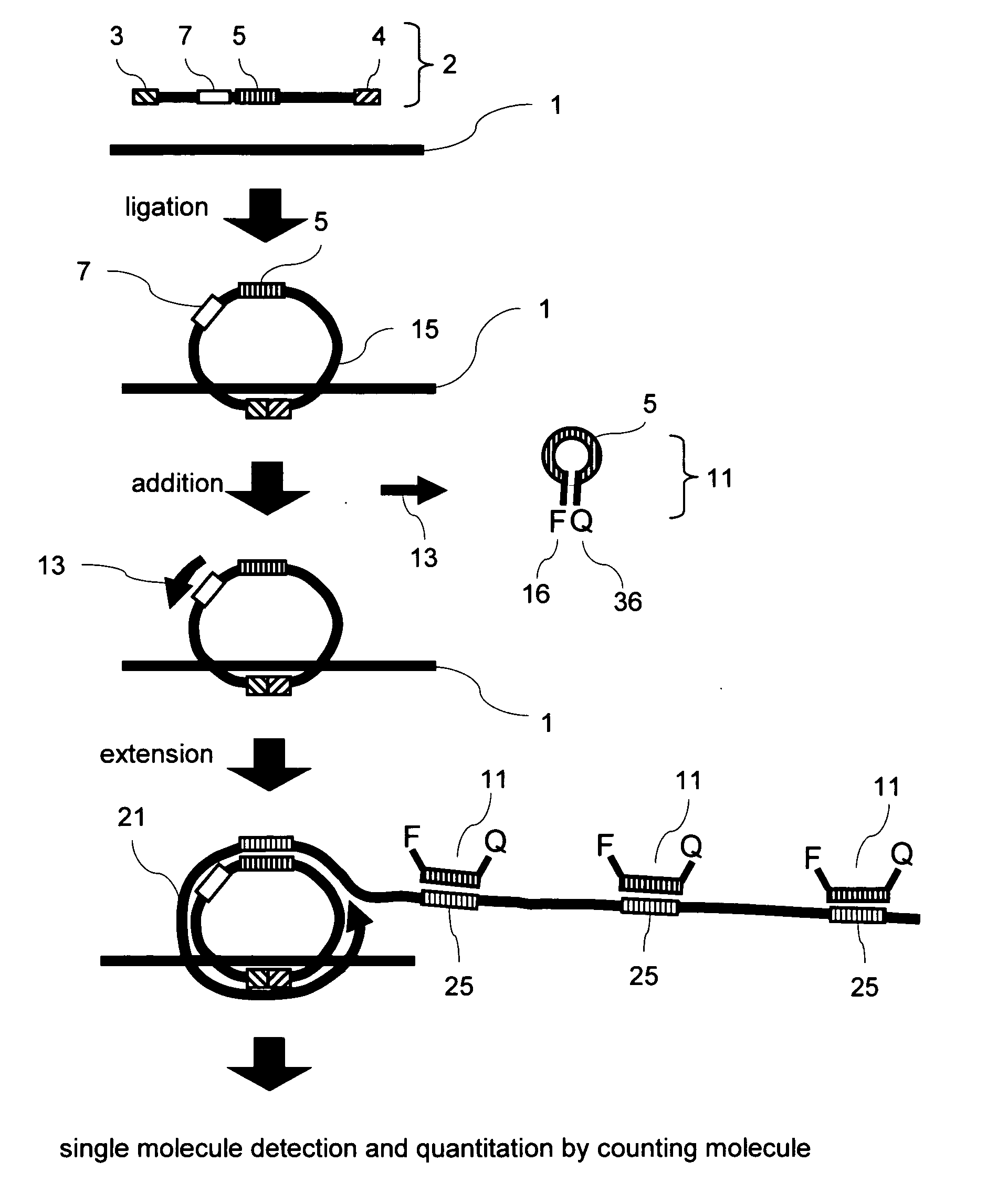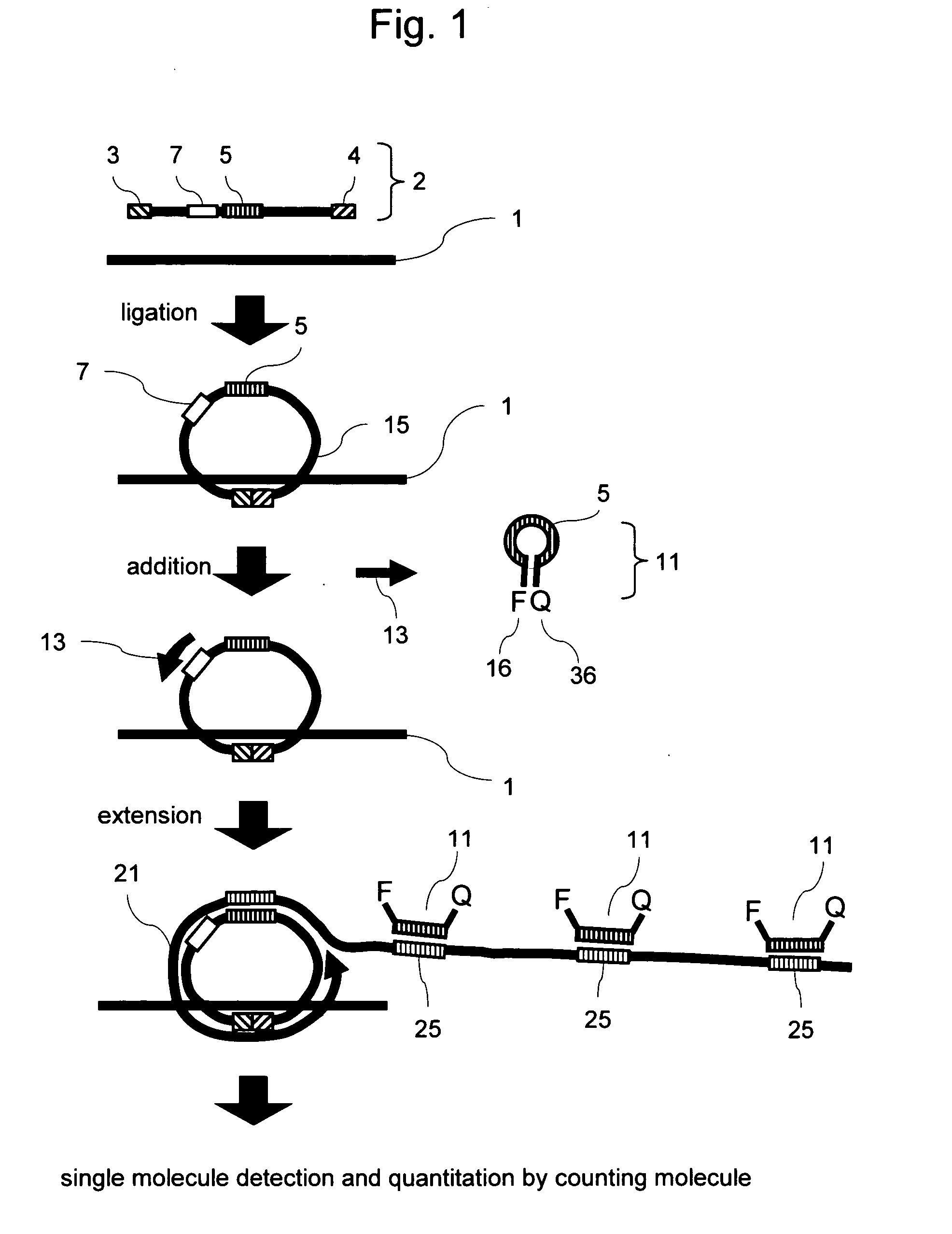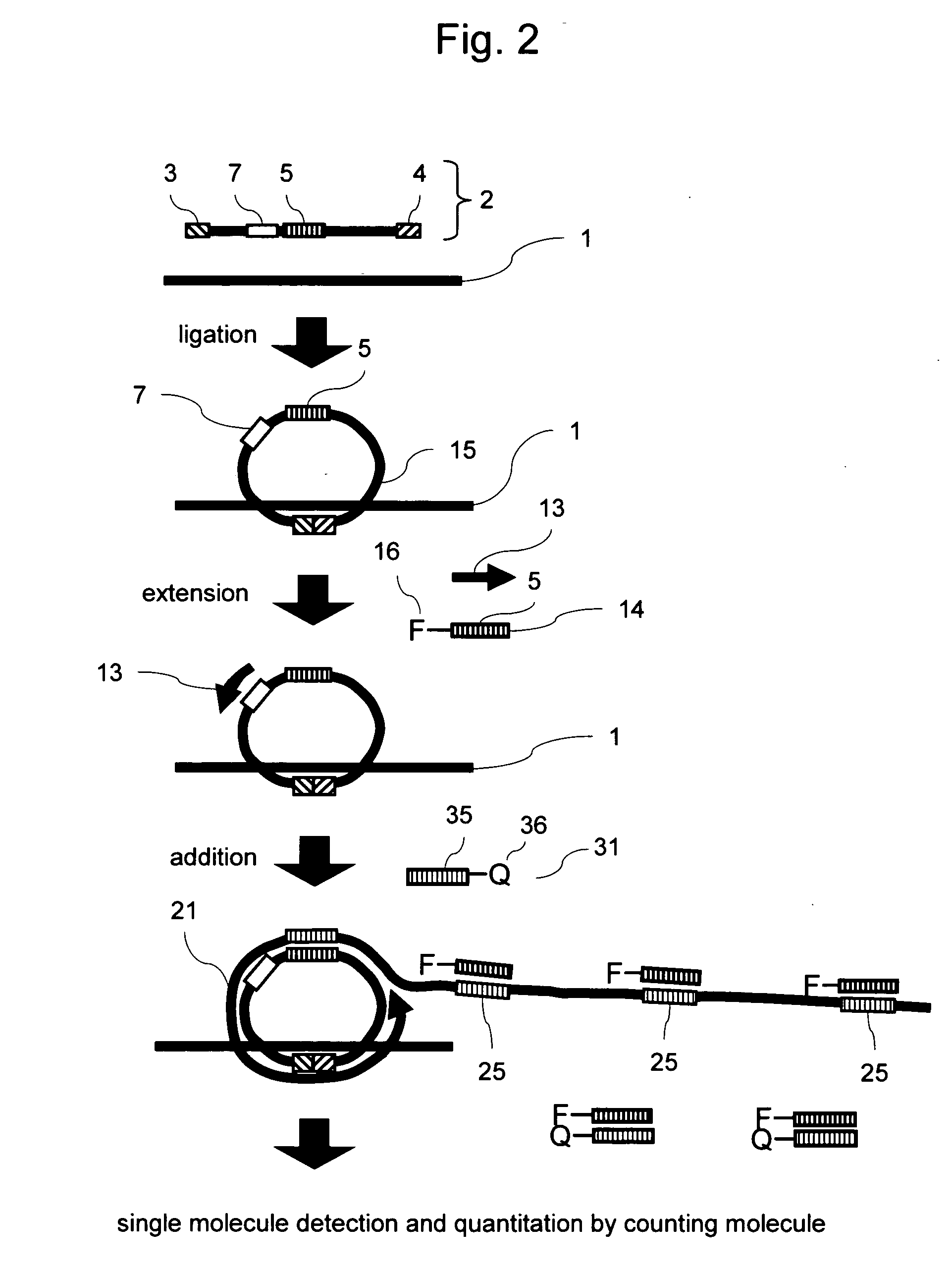Methods of nucleic acid analysis by single molecule detection
a nucleic acid analysis and single molecule technology, applied in the direction of microorganism testing/measurement, biochemistry apparatus and processes, etc., can solve the problems of insufficient application of conventional techniques to actual quantitation, insufficient accuracy and high sensitive, etc., and achieve high sensitivity
- Summary
- Abstract
- Description
- Claims
- Application Information
AI Technical Summary
Benefits of technology
Problems solved by technology
Method used
Image
Examples
example 1
Quantitation Using a Target Gene Model
[0075] It was confirmed that highly accurate quantitation could be actually carried out by the method of present invention.
(1) Testing Method
[0076] A test was performed using a target oligo having part of the hepatitis C virus (HCV) sequence as a target gene model. A padlock probe was allowed to act on a target oligo of known concentration, i.e., 10−16 M, 10−15M, 10−14 M, or 10−13 M, to perform a ligation reaction. NEB's ligase was employed. A target oligo (SEQ ID NO: 1) at a given concentration and 10 fmol of padlock probe for HCV (SEQ ID NO: 2) were added to a solution containing 10 μl of reaction buffer, the mixture was incubated at 37° C. for 30 minutes to perform a ligation reaction, and the reaction was terminated by deactivating the ligase. Subsequently, NEB's Bst DNA polymerase was used as strand-displacement DNA polymerase, and a primer (SEQ ID NO: 3) and a molecular beacon (SEQ ID NO: 4) were used to perform an RCR reaction. The ci...
example 2
Quantitative Analysis of Hepatitis C Virus
[0078] Hepatitis C viruses at unknown concentration were quantitated by the method of the present invention.
(1) Testing Method
[0079] Total RNA extracted from 1 ml of blood was reversely transcribed using a reverse transcription primer (SEQ ID NO: 5) for hepatitis C viruses (HCV), and the resulting cDNA was used as a sample. Reverse transcription was carried out by adding 2 pmol of the following reverse transcription primer, RNA extracted from blood, and Superscript II reverse transcriptase (Invitrogen) to a reaction buffer and incubating the mixture at 42° C. for 50 minutes. Thereafter, ribonuclease H was added to the reaction solution and the resultant was incubated at 37° C. for 20 minutes to decompose RNA remaining in the reaction solution.
[0080] Reverse transcription primer for HCV: 5′-TGC TCA TGG TGC ACG GTC TA-3′ (SEQ ID NO: 5)
[0081] The ligation reaction was next carried out. NEB's ligase was employed. The first-strand cDNA synt...
example 3
Quantitatively Detection of Hepatitis B Viruses (HBV) Using Fluorescent Probe
[0083] In the method according to the present invention, the fluorescent probe and the quencher probe as shown in FIG. 2 were used to quantitate HBV. The quencher probe was designed to have a single base-pair mismatch with the sequence of the fluorescent probe, and this mismatch was found to improve the efficiency of fluorescent labeling.
(1) Testing Method
[0084] As a sample, DNA extracted from blood was subjected to hybridization and ligation to the target gene of the padlock probe for HBV (SEQ ID NO: 6). NEB's ligase was employed. The extracted DNA and 10 fmol of padlock probe for HBV (SEQ ID NO: 6) were added to a solution containing 10 μl of reaction buffer, the mixture was incubated at 37° C. for 30 minutes to perform a ligation reaction, and the ligase was then deactivated. Further, NEB's Bst DNA polymerase was used as strand-displacement DNA polymerase, and a primer (SEQ ID NO: 3) used in Example ...
PUM
| Property | Measurement | Unit |
|---|---|---|
| depth | aaaaa | aaaaa |
| volume | aaaaa | aaaaa |
| volume | aaaaa | aaaaa |
Abstract
Description
Claims
Application Information
 Login to View More
Login to View More - R&D
- Intellectual Property
- Life Sciences
- Materials
- Tech Scout
- Unparalleled Data Quality
- Higher Quality Content
- 60% Fewer Hallucinations
Browse by: Latest US Patents, China's latest patents, Technical Efficacy Thesaurus, Application Domain, Technology Topic, Popular Technical Reports.
© 2025 PatSnap. All rights reserved.Legal|Privacy policy|Modern Slavery Act Transparency Statement|Sitemap|About US| Contact US: help@patsnap.com



